John Dillinger, James Dean and more: 12 famous graves in Indiana
- Oops!Something went wrong.Please try again later.
- Oops!Something went wrong.Please try again later.
- Oops!Something went wrong.Please try again later.
- Oops!Something went wrong.Please try again later.
Editor's note: This story was originally published in 2019.
Famous — and sometimes infamous — Hoosiers often sever their Indiana ties once they've hit the big time. Many of them, however, return home in death.
For some, their graves have become destination spots for fans or 'tombstone tourists,' who leave tokens of affection at their graves — even decades after their deaths.
Here are 12 famous graves in Indiana:
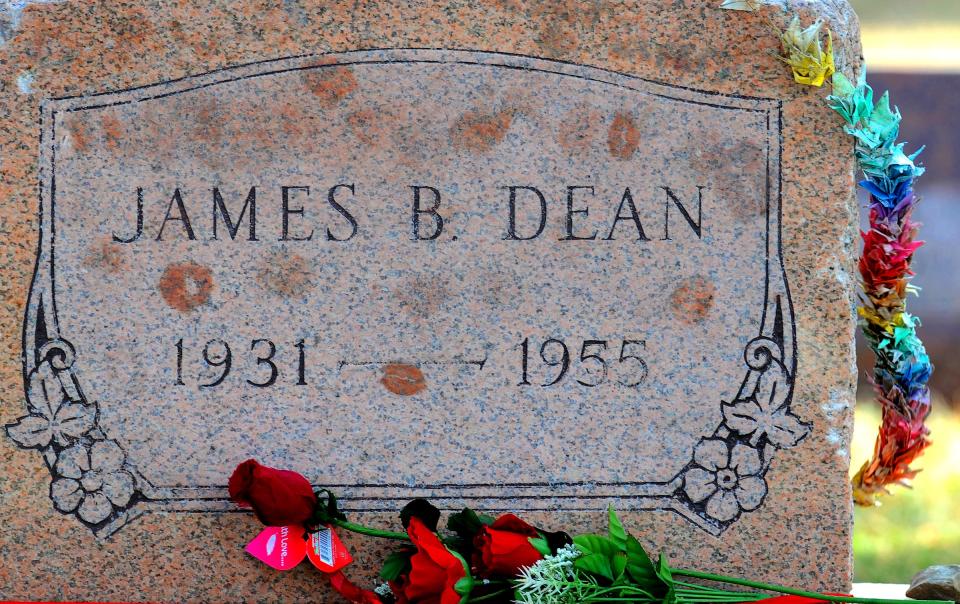
James Dean
Memorial Park, Fairmount Feb. 8, 1931 - Sept. 30, 1955
Born in a Seven Gables apartment house in Marion to a farmer's daughter and a dental technician, James Dean moved to California with his family as a child.
After his mother, Mildred, died of uterine cancer, his father, Winton, sent him back to Indiana to be raised by his aunt and uncle, Ortense and Marcus Winslow, at their farm. Dean lived most of his formative years in Fairmount, Indiana.
He made three movies in a little more than a year: "Rebel Without a Cause," "East of Eden," and "Giant."
Dean died in a crash in his new Porsche Spyder, nicknamed "Little Bastard," near Cholame, California. He was 24 years old.
Dean's closed-casket funeral was held on Oct. 8, 1955, at the Fairmount Friends Church in Fairmount, where over 2,000 fans stood outside the church to pay their respects.
His headstone is typically marked by flowers and lipstick kisses.
Cole Porter
Mount Hope Cemetery, PeruJune 9, 1891 - Oct. 15, 1964
Born in Peru, Cole Porter grew up in a wealthy, socially powerful family. Porter left Indiana as a teenager in 1905, attending Worcester Academy in Massachusetts and then Yale University.
Porter wrote more than 1,500 songs for stage, movies and television, including such standards as "I Get a Kick Out of You," "Night and Day," "Begin the Beguine," and "Anything Goes."
After a turbulent life of ulcers, alcoholism and depression, Porter died in 1964 and his body was sent back to Indiana for burial at Mount Hope Cemetery.
Porter was buried in the family plot of his mother, Kate Cole. The Cole family lot is marked by one large monument in the shape of a dome with smaller dome monuments for family members.

John 'Johnny Appleseed' Chapman
Johnny Appleseed Memorial Park, Fort WayneSept. 26, 1774 - March 18, 1845
Born John Chapman near Leominster, Massachusetts, in 1774. "Johnny Appleseed" moved to Allen County in 1834 and purchased land along the Maumee River for a tree nursery.
Chapman died in Fort Wayne in 1845 at the age of 71. He owned more than 1,000 acres at the time of his death.
The gravemarker is littered with little green apples from nearby trees and visitors.
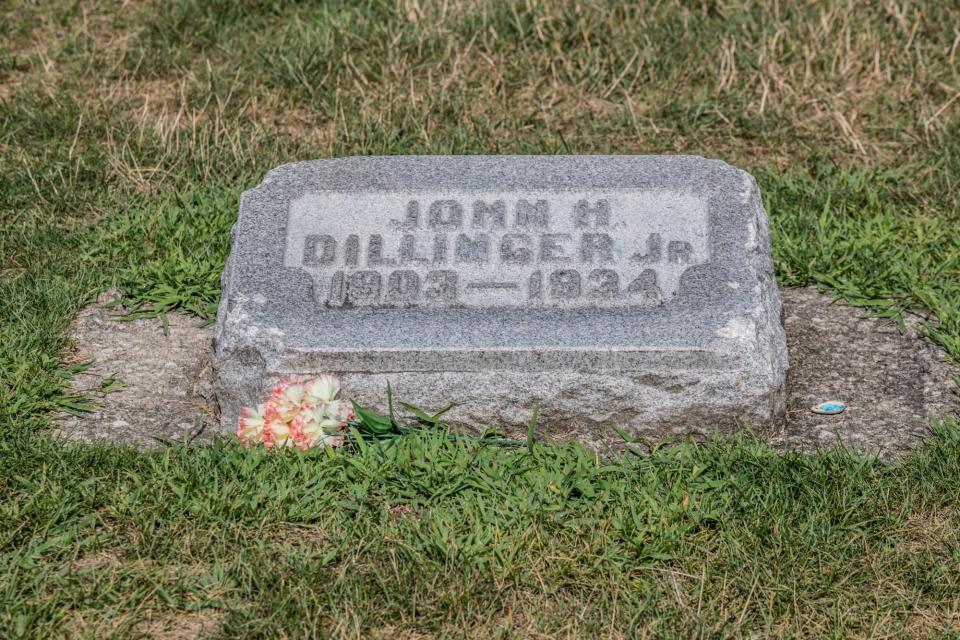
John Dillinger
Crown Hill Cemetery, IndianapolisJune 22, 1903 - July 22, 1934
Born in Indianapolis, John Dillinger grew up in Mooresville, where he committed his first crime. He went from small-time crook to America’s most wanted after a string of bank robberies and an ill-fated bank robbery that left a police officer dead.
On July 22, 1934, 15 FBI agents and members of the East Chicago Police Department killed Dillinger as he left the Biograph Theatre. Dillinger's body was brought back to Mooresville, where nearly 10,000 people waited to view his body. Funeral services were held at the home of his sister, Audrey Hancock, in Maywood.
He is buried in Crown Hill Cemetery, and it is reported that two-and-a-half tons of concrete were placed on the coffin due to fear that attempts might be made by "ghouls" to steal his body.
In July, the Indiana State Department of Health approved a request from Dillinger's nephew to exhume the famous criminal's body.
Small chunks of the headstone, which may have been replaced once, have been chipped off by visitors over the years.
Retro Indy: The life and crimes of John Dillinger
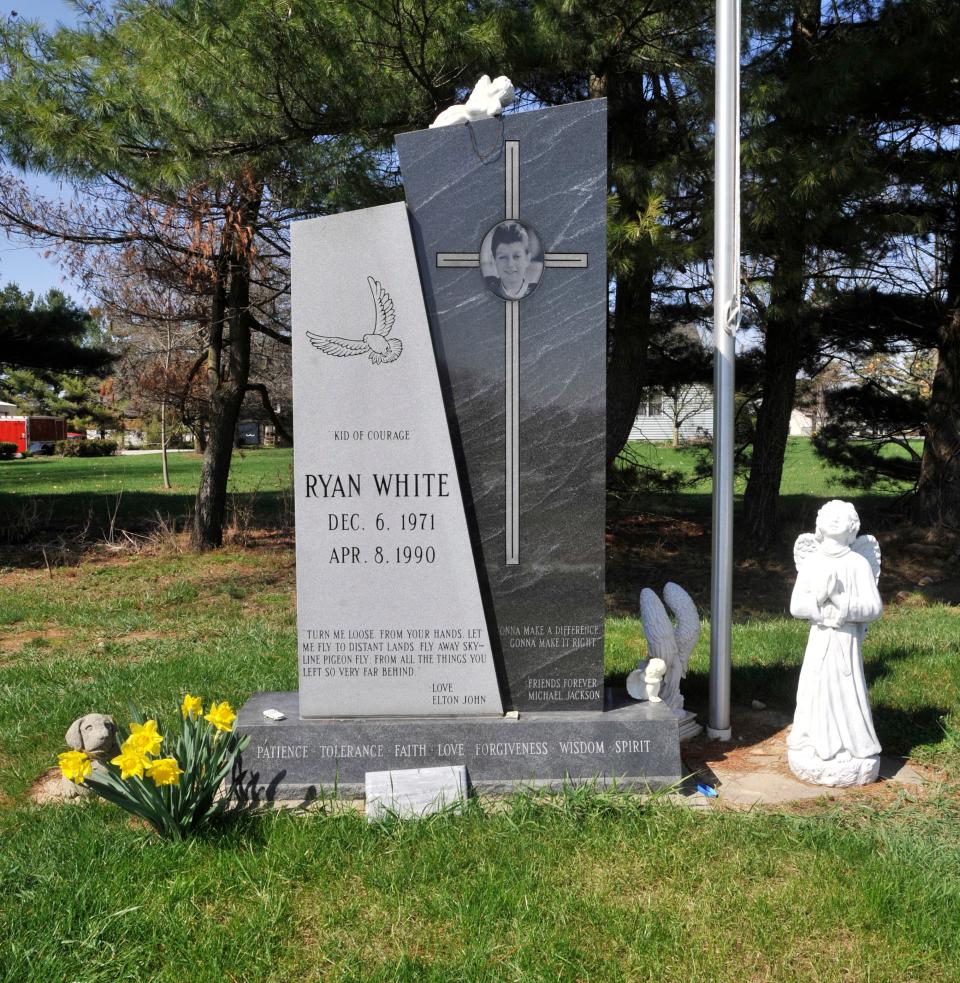
Ryan White
Cicero Cemetery, CiceroDec. 6, 1971 - April 8, 1990
In 1984, Ryan White, a soft-spoken Indiana schoolboy, was diagnosed with a new disease that had modern medicine stumped and America simmering on the verge of panic.
With the boy barred from public school and shunned by former classmates and teachers, the family moved to Cicero.
White died of complications from AIDS at Riley Hospital for Children in Indianapolis. 1,500 people, including First Lady Barbara Bush, Michael Jackson and Elton John, attended his funeral at Second Presbyterian in Indianapolis.
From 2015: The unusual, unforgettable way Indy buried Ryan White
Emmett Kelly Sr.
Rest Haven Memorial Park, LafayetteDec. 9, 1898 - March 28, 1979
Emmett Kelly Sr.'s career as a cartoonist, trapeze performer and “Weary Willie” the clown with Ringling Brothers, Barnum and Bailey spanned 55 years.
Kelly’s parents lived in Lafayette, as did his sister, Sylvia, so Kelly claimed it as his home as well.
Kelly died of a heart attack in front of his home in Sarasota, Florida, and was brought to Lafayette for burial.
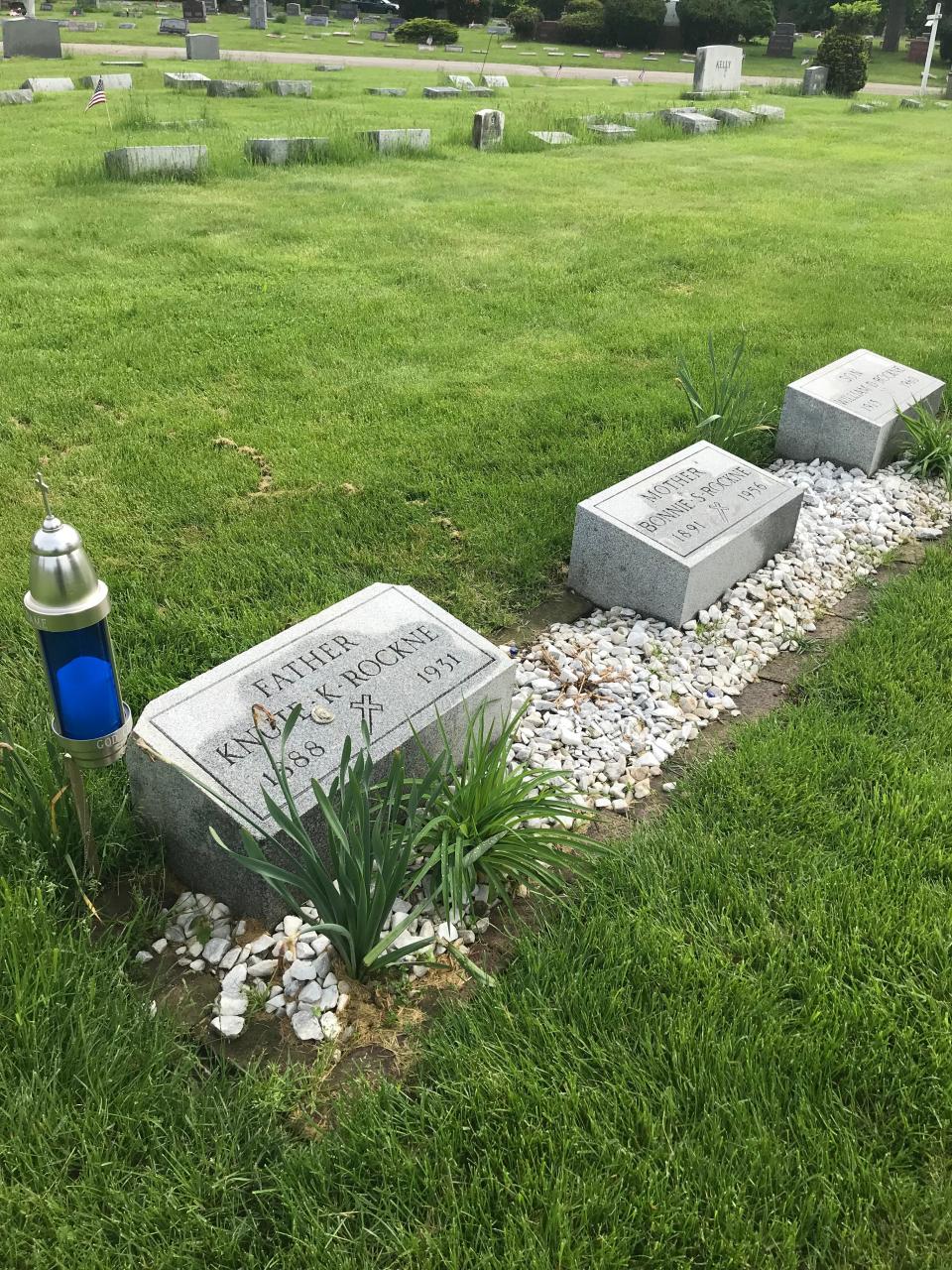
Knute Rockne
Highland Cemetery, South BendMarch 4, 1888 - March 31, 1931
The Norwegian-born American football coach built the University of Notre Dame into a powerhouse in college football and became the intercollegiate sport’s first true celebrity coach.
Under Knute Rockne, Notre Dame teams won 105 games, lost 12 and tied 5 from 1918 through 1931. Notre Dame was declared national champions in 1924, 1929 and 1930. Rockne died in a plane crash in Bazaar, Kansas.
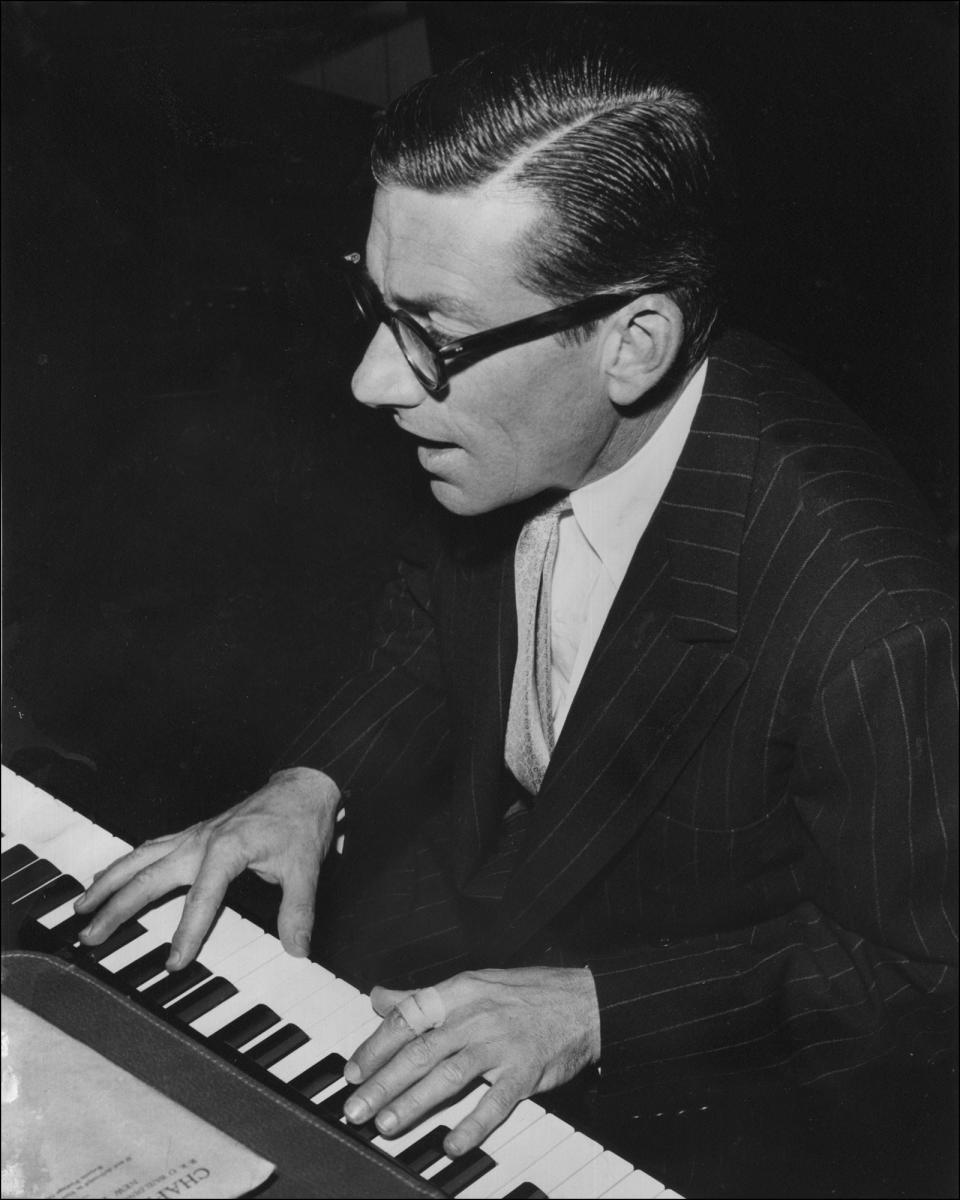
Hoagy Carmichael
Rose Hill Cemetery, BloomingtonNov. 22, 1899 - Dec. 27, 1981
Songwriter, entertainer and actor Hoagy Carmichael, best known for the song "Stardust," was born in humble conditions in Bloomington in 1899.
Carmichael enrolled in law school at Indiana University and formed a jazz band called The Collegians. Despite graduating with a law degree in 1927, the lure of the music industry was too great.
Carmichael carved out a career in New York and Hollywood as a singer, songwriter and a folksy character actor. In 1952, Carmichael won an Academy Award in the best original song category. "In the Cool, Cool, Cool of the Evening" appeared in the film "Here Comes the Groom."
Carmichael retired to Palm Springs, California, and died on Dec. 27, 1981. Carmichael's body was returned to Indiana and buried at Rose Hill Cemetery in Bloomington.
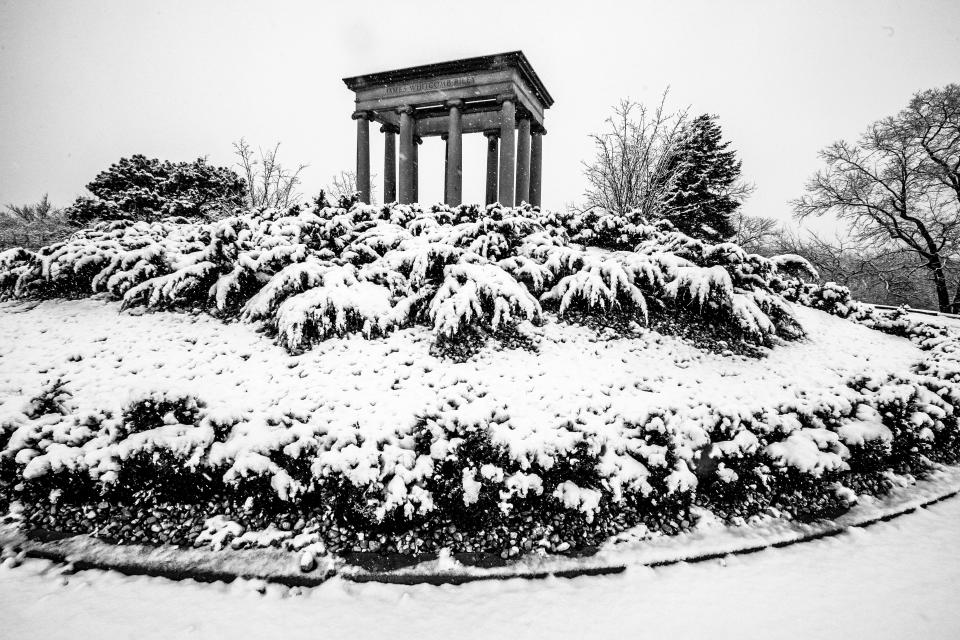
James Whitcomb Riley
Crown Hill, IndianapolisOct. 7, 1849 - July 22, 1916
James Whitcomb Riley built his reputation, and his livelihood, on humorous poems such as "Little Orphant Annie" and "When the Frost is on the Punkin," earning him the moniker “Hoosier Poet.”
For the last 23 years of his life, Riley lived on Lockerbie Street in Indianapolis. That home and his home in Greenfield have been preserved.
When Riley died, his body lay in state at the Capitol building in Indianapolis, where more than 35,000 people came to pay their respects.
Over Riley's dead body: Indy's weirdest civic fight
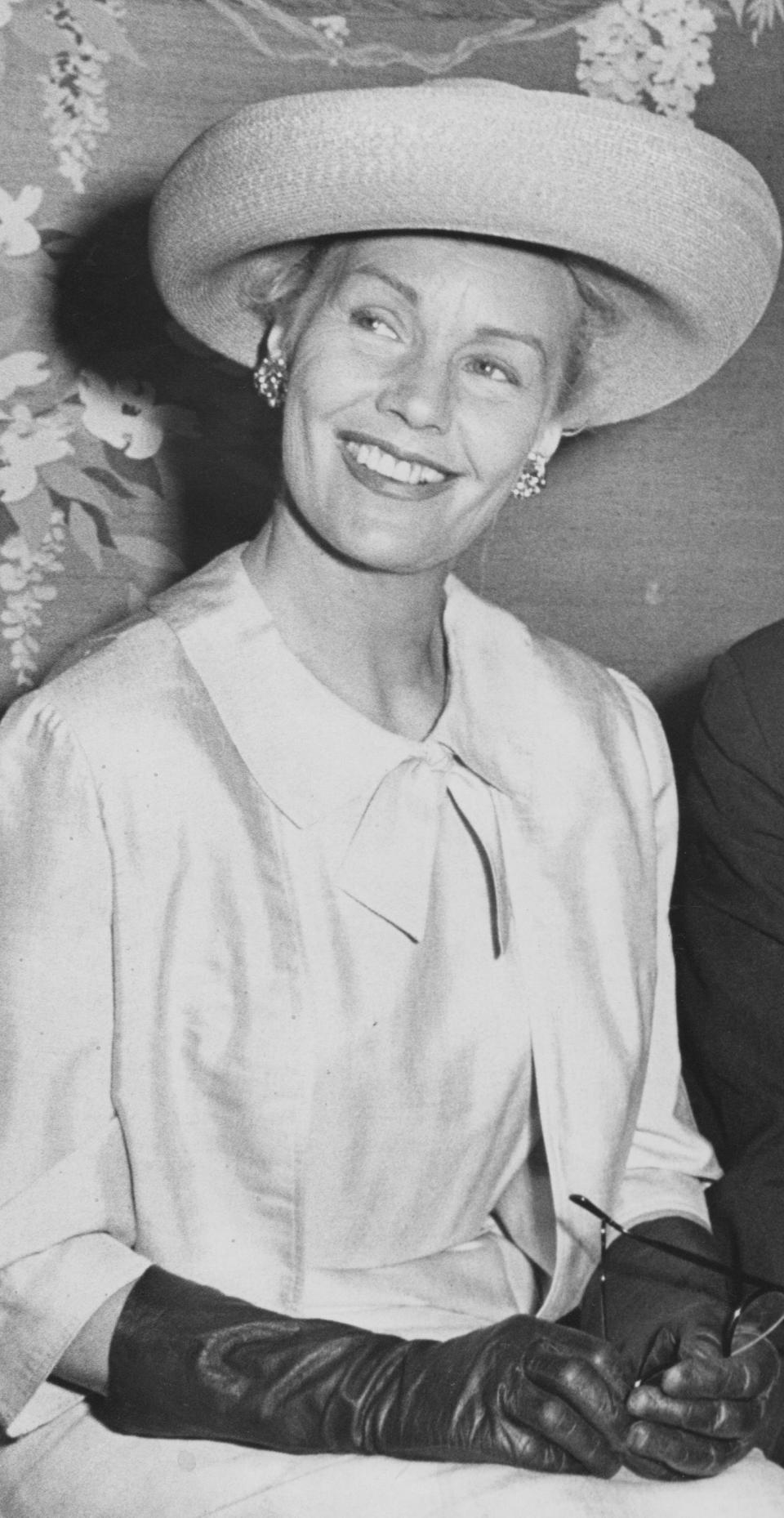
Frances Farmer
Oakland Memorial Gardens, FishersSept.19, 1913 - Aug. 1, 1970
At 22 years old, Frances Farmer signed a seven-year contract with Paramount Pictures and had a successful screen and stage career through the early 1940s. Her unstable behavior landed her in an insane asylum, where she may have been lobotomized.
Farmer ended up in Indianapolis, where she hosted an afternoon movie at a local TV station and interviewed celebrities passing through town.
Frances Farmer died at the age of 56 after a battle with esophageal cancer and is entombed at Oak Lawn Memorial Gardens in Fishers, within the first level of Our Lady of Miraculous Medal Chapel mausoleum.
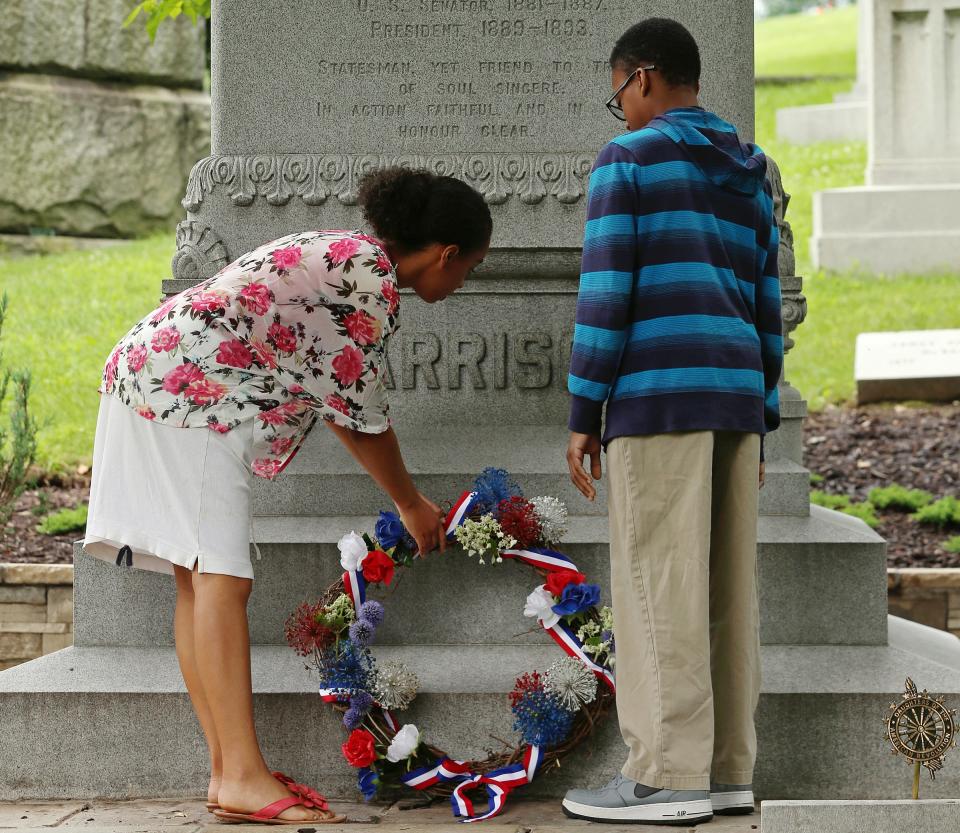
Benjamin Harrison
Crown Hill, Indianapolis Aug. 20, 1833 - March 13, 1901
Benjamin Harrison was born Aug. 20, 1833, in Ohio, where he grew up and attended college. As a young man, he came to Indianapolis in 1854 to start his career as an attorney. His family was already well known in the city: His grandfather, William Henry Harrison, had been governor of the Indiana Territory before statehood.
Harrison became the Republican Party candidate for president in 1888. In the general election, he received 100,000 fewer votes than incumbent President Grover Cleveland but won the electoral vote 233 to 168.
In 1901, Harrison fell ill with influenza and did not recover. The former president died on March 13, 1901.
Booth Tarkington
Crown Hill, IndianapolisJuly 29, 1869 - May 19, 1946
Best-known for his romanticized depiction of Midwesterners, novelist Booth Tarkington's early work, "The Gentleman from Indiana" (1899), began his string of successes that included "The Magnificent Ambersons" and "Alice Adams," each received the Pulitzer Prize and were adapted for the screen.
Tarkington died in 1946.
This article originally appeared on Indianapolis Star: John Dillinger, James Dean and more: 12 famous graves in Indiana

